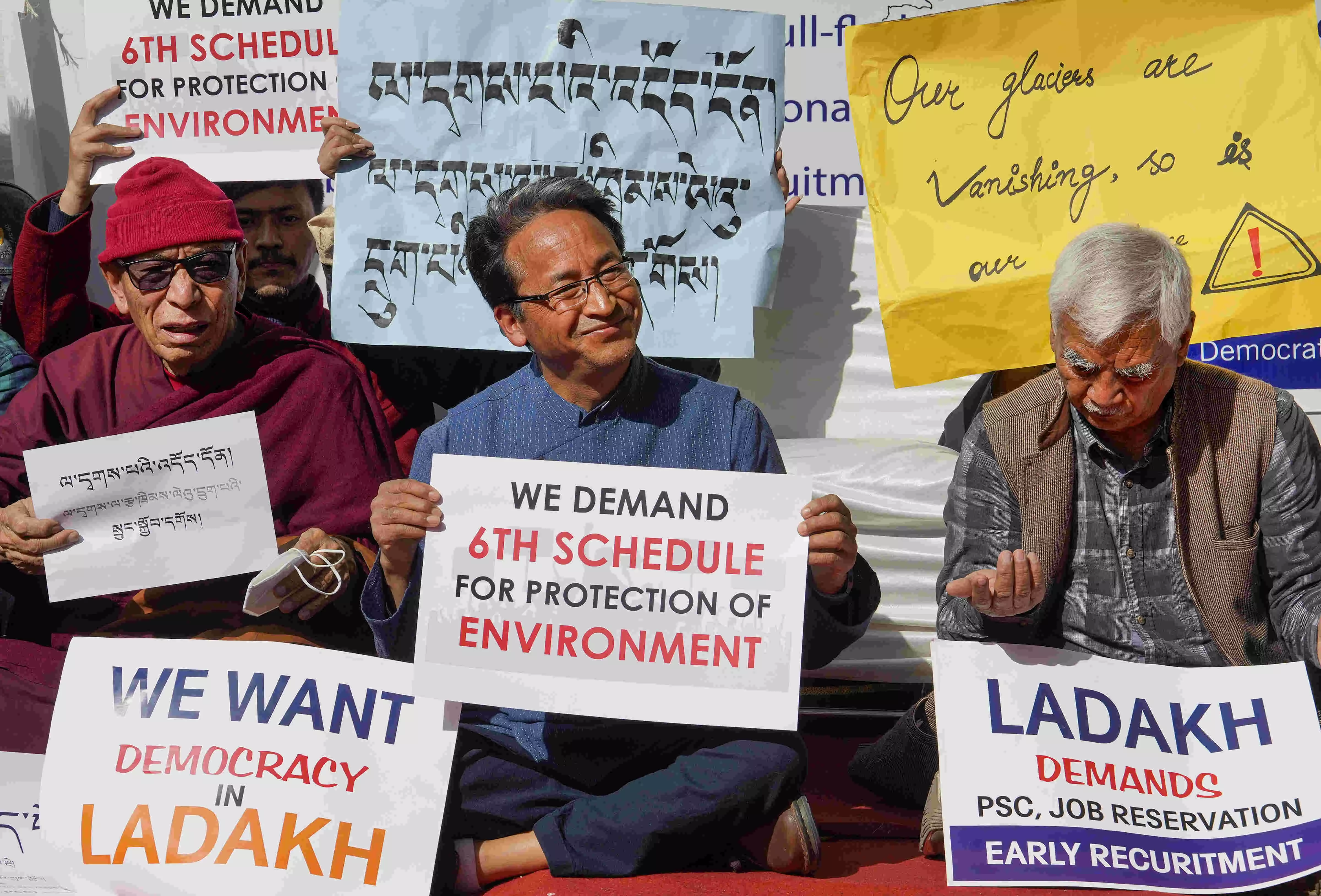All is not well
The call for statehood grows louder from Ladakh as protests draw our attention to long-pending issues

Trouble is brewing in the picturesque locales of Ladakh. Four years ago, when the region was separated from Jammu and Kashmir and anointed as a Union Territory (UT) on October 31, 2019, Ladakhis rejoiced. Finally, they would be heard. Resources meant for the area, which have been historically used up by J&K, would now make their way to Ladakh. Or so they thought. Today, the situation has changed. Led by the best-known Ladakhi, Sonam Wangchuk, the locals are up in arms.
In a unique proclamation of protest, innovator and climate activist, Wangchuk, released a series of videos to raise awareness on several issues plaguing the UT. A video addressed to Prime Minister Narendra Modi, claiming that all was not well in Ladakh, urged the PM to intervene. Towards the end of January, he also commenced a five-day climate fast to save Ladakh. The clincher — he would starve in the bitterly cold outdoors. Out came another video. A sobering moment to watch the man who inspired the Bollywood blockbuster, 3 Idiots, brave -20 degrees on the rooftop of his Himalayan Institute of Alternative Ladakh (HIAL) in Phyang. He had been denied permission to fast in Khardung La, home to the world’s highest motorable road at 18,000 feet. Wangchuk claimed to be under house arrest and also alleged that he was being forced to sign a bond purportedly to stop his protests.
At the heart of the demands, is the region’s desire to be seen by the central government. Their most compelling call is to stem climate change in the region. Wangchuk said that as per recent studies, glaciers in Leh-Ladakh are fast depleting, with those that have highways and human activities surrounding them, melting even faster. The diminishing of glaciers can wreak havoc to the region, it will also cause water scarcity in the rest of the country. The uncontrolled advent of tourists and industries threatens the delicate ecological balance of the region, and will eventually annihilate it.
The unrest that has been growing in the scenic mountains, has now reached the national capital. The protestors strongly believe that only with governance in the hands of the Ladakhis can regulations be made in the interest of the people. They want more jobs, more development, but also more say in decision-making. Perhaps they had believed that becoming a Union Territory would pave the way for an elected government like in Delhi and Pondicherry. In September 2019, the National Commission for Scheduled Tribes recommended that Ladakh be included under the Sixth Schedule (of Article 244 of the Indian Constitution) since a majority of the population (97 per cent) were tribal. The Sixth Schedule governs the north-eastern states of Assam, Mizoram, Tripura, and Meghalaya. However, with zero action on that front, the protests have picked up speed. All religions, minorities, ethnic, and local political groups in Ladakh have converged on the same demands and are so far speaking in the same voice. With unified support also comes their resolve to carry on the protests, and in fact, even intensify it if statehood is not granted.
The demands for statehood in India have had a contentious and bloody past. Protests, in the case of some states, have been continuing for decades. Countless hartals, roadblocks, riots, and self-immolations finally yielded autonomy for some. But in the case of Ladakh, there is an unmissable factor of climate action. Climate change and global warming is an international crisis. While we step up our efforts to control carbon footprint and prevent further environmental destruction, allowing greed in the name of industrialisation to destroy Ladakh would be sacrilege. The Centre does not have decades to solve the Ladakh issue; climate change doesn’t allow this luxury this time.
The writer is an author and media entrepreneur. Views expressed are personal



